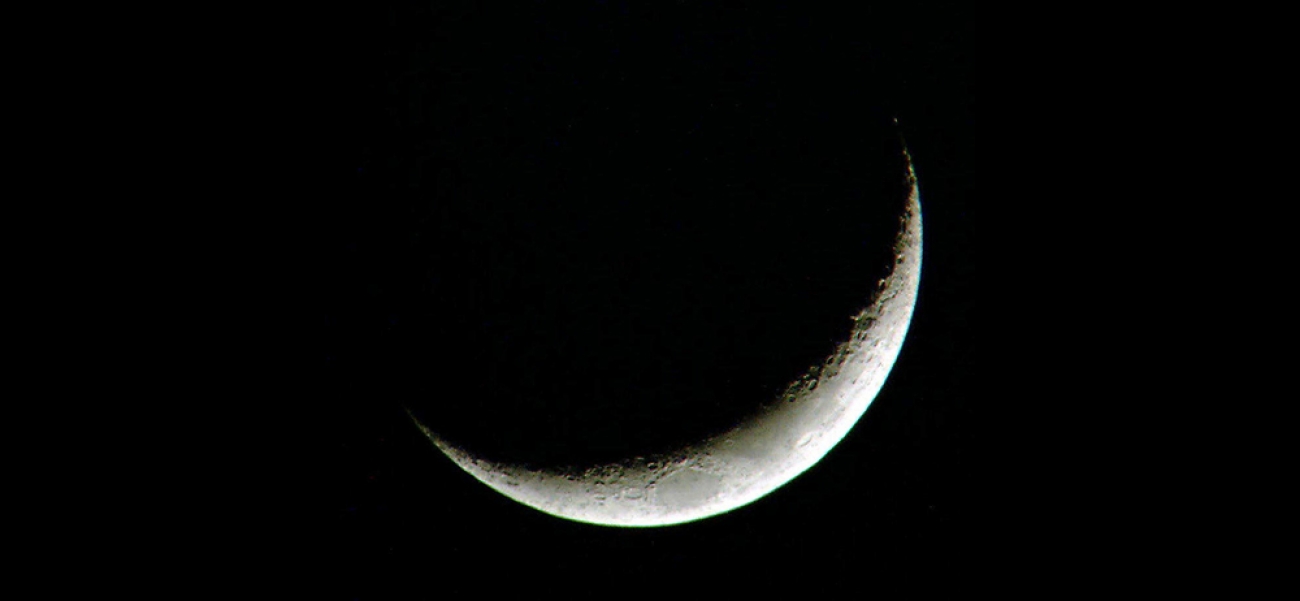and then decide about it. The Moon's motion is well understood, and astronomers use more than 150 equations to pinpoint its exact location. Its setting and rising times are well known, and it is a surprise to no one that our Moon is a much better time-teller than the Sun because of its changing phases. However, when it comes to seeing the young crescent just after New Moon, things become a little bit complicated. Visibility criteria, mainly astronomical, have been set since antiquity about the conditions of such visibility. The Moon age after New Moon, the time lag between sunset and Moonset, the Moon's altitude just after sunset, and the Moon's azimuth are just a few that are commonly used to figure out the possibility of seeing the young crescent or not. All of these are just numbers that can be known to great accuracy and can be easily parameterized.
Nevertheless, one major factor makes the situation very unpredictable: the sky condition at the observation time. Having a dusty and foggy western horizon can be a significant detriment even if a telescope is being used. The location of the observer is also crucial in such visibility. Having a high altitude location will definitely help to have a clear horizon with no obstacles such as buildings or the surrounding mountains.
With all of these difficulties, it would be preferable to use the same criteria to unite the rank and have a single day for fasting for all Muslims. What are the best standard criteria to be followed everywhere to observe the very young crescent? If such criteria are adopted, should we all abide by them? If so, what is the governing body overseeing that every Muslim country abides by them? Is the decision of starting the Islamic month purely religious, or does it have other constraints? There are no clear answers to all of these questions that may have different understandings all over the Muslim world. This is to say that the matter is not just an astronomical one. It goes beyond our everyday common sense in a world where everything is so close. Because of our technological advances, the world became so small. Every Muslim knows about the Moon, its motion, rising, and setting just at the click of a button. This culture of astronomical knowledge did not exist just one or two decades ago. With all the social media gadgets, the thin crescent observation news travels as fast as the speed of light. This should make decisions easier unless there are obscure strings behind, much obscure than strings' theory.
In any case, and for this year, what are then the obvious astronomical numbers? The table below lays down gives some important astronomical information about the new Moon dates related to the beginning of Shaaban, Ramadhan, and Shawwal 1442 AH, and the possibility of observing the thin crescent with the naked eye or with a telescope. The numbers are for the city of Sharjah, United Arab Emirates.
|
1442 AH |
Shaaban |
Ramadhan |
Shawwal |
|||
|
Mar. 13, 2021 |
Mar. 14, 2021 |
Apr. 12, 2021 |
Apr. 13, 2021 |
May 11, 2021 |
May 12, 2021 |
|
|
New Moon |
14:21 |
-- |
06:30 |
-- |
22:59 |
-- |
|
Sunset (Azimuth) |
18:26 (2670) |
18:26 (2680) |
18:39 (2800) |
18:40 (2810) |
18:54 (2900) |
18:54 (2910) |
|
Moonset (Azimuth) |
18:30 (2630) |
19:22 (2690) |
19:00 (2790) |
19:51 (2840) |
18:39 (2870) |
19:32 (2920) |
|
Moon’s Altitude |
0.60 |
11.60 |
3.90 |
14.60 |
-- |
7.10 |
|
Moon’s Illumination (%) |
0.21+ |
1.51+ |
0.33+ |
2.11+ |
-- |
0.62+ |
|
Lag Time (Minutes) |
4 |
56 |
21 |
71 |
-- |
36 |
|
Age (Hours, Min) |
5 h |
29 h |
12 h 9 |
36 h 9 |
-- |
20 h |
|
Expected First Day |
Monday – Mar. 15, 2021 |
Tuesday – Apr. 13, 2021 |
Thursday – May 13, 2021 |
|||
For Shaaban, the setting is impossible (very young age of about 5 hours) for the crescent to be observed on Mar. 13 with the naked eye. We should expect the first of Shaaban 1442 AH to start on Monday, Mar. 15, 2021. For Ramadhan, the setting is difficult for the crescent to be observed on Apr. 12 with the naked eye, but possible with a telescope if the sky conditions are perfect. We should expect the first day of Ramadhan 1442 AH to be on Tuesday, Apr. 13, 2021. For Shawwal, the setting is impossible for the crescent to be observed on May 11 since the Moon is not new yet. We should expect the first day of Shawwal 1442 AH to be on Thursday, May 13, 2021.



